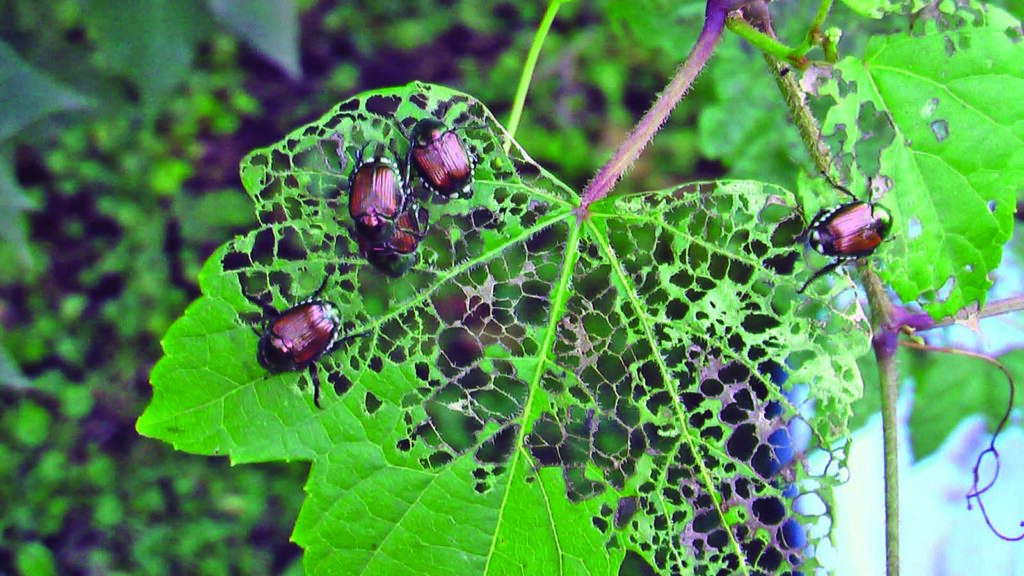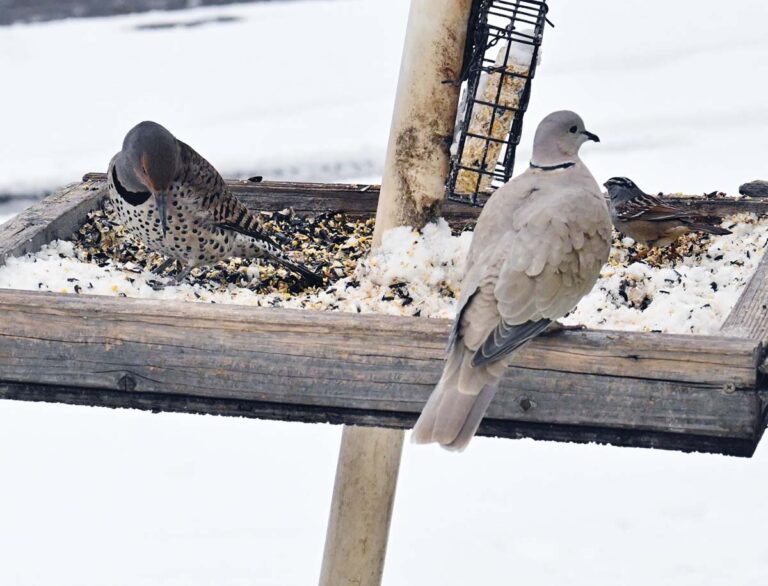If you are a serious local gardener, by now you have seen them – metallic-green Japanese beetles descending on your garden, bringing destruction that few other pests can match. This can be a frustrating dilemma, but perhaps a brief discussion can bring some helpful options to consider.
Japanese beetles were accidentally introduced to the Eastern United States over 100 years ago and have made their way to our area in recent years. Once the beetles find a suitable food source, they produce pheromones to attract others, often amounting to hundreds, if not thousands in a single spot per season. Activity is most intense over a 4 to 6 week period beginning in late June, after which the beetles gradually die off. They typically lay their eggs in lawns, where the larvae feed on grass roots until emerging as adults the following year. Grapes, roses, raspberries and lindens to name a few, Japanese beetles are known to feed on over 300 varieties of plants.
There are multiple ways to attempt control or eradication. Common pesticides can be effective but are a temporary fix, and I don’t recommend toxic chemicals for a variety of reasons. Neem oil may be effective as well (and is natural), but you will likewise need to spray often to keep them at bay, since time and precipitation will diminish these treatments.
Pheromone traps (sold at Home Depot and Lowe’s) are highly effective at attracting and trapping the beetles, but I do caution from experience that many of these beetles will divert to your plants.
Hand removal, unfortunately, is one of the most reliable ways to control Japanese Beetles, especially when done consistently. The best way is to knock them off leaves into a wide-mouth container filled with a little water and dish soap. The water slows them down and the dish soap causes them to drown. If you have chickens, I highly recommend feeding the beetles to them for a healthy treat! I have noticed that Japanese beetles are much slower during the morning and evening, thus easier to catch at these times.
One less-known control method that has risen to the top of my recommendation list is fine bug netting, which can easily be found at sources like Amazon. It is annoying to have to cover my many grape vines with this material, but having this effective barrier saves so much time.
Lastly, there is a biological treatment called milky spore. You can sprinkle this on your grassy areas and it will kill the larvae (grubs). Results are not immediate, but this is excellent for the long run and would be most effective if it can be done with community participation, which I would be all for!






